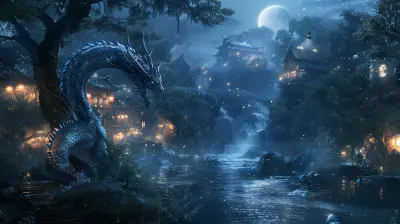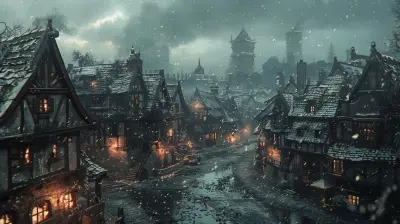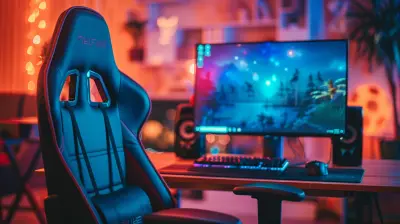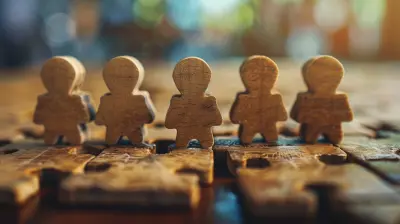Visual Effects in Horror Games: How Fear Is Enhanced by Graphics
26 April 2025
Let’s get one thing straight from the jump: horror games don’t just scare you because of the creepy music or sudden jump scares. Oh no, my friend, they mess with your mind because of the visuals—those bone-chilling, hair-raising, utterly horrifying graphics that can make you feel like the monster under your bed is real. In the world of horror games, visual effects are like the secret sauce that adds a perfect blend of fear, dread, and adrenaline to the player’s experience.
But what exactly makes these graphics so unsettling? And how do game designers use visual effects to tap into our deepest fears? Well, buckle up, because we’re taking a bold dive into the terrifying art of graphics in horror games. Oh, and don’t say I didn’t warn you—you might not sleep tonight. 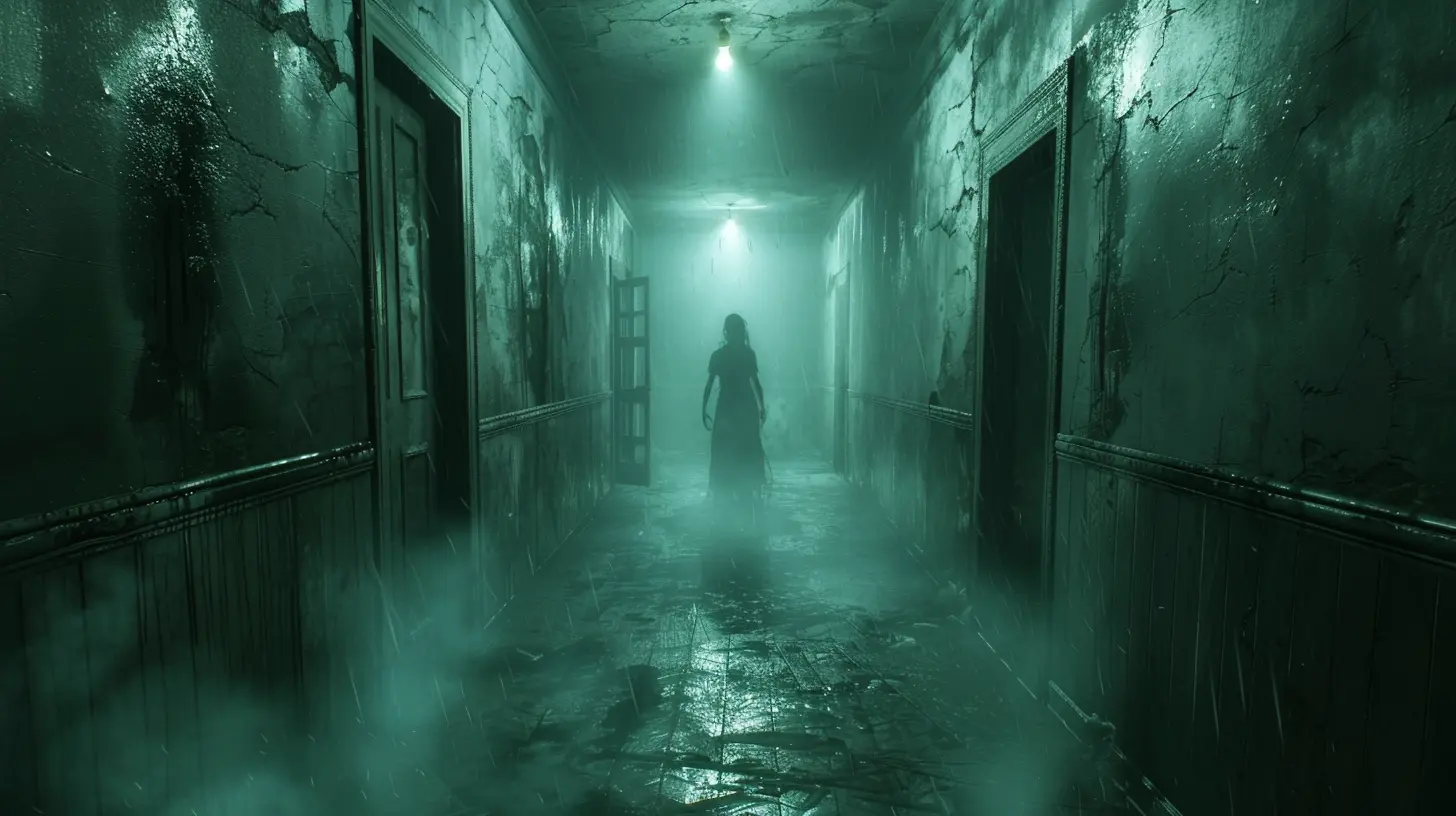
The Power of Visual Storytelling in Horror Games
Let’s face it, without top-tier visuals, horror games would lose 90% of their punch. Sure, a good story matters, but if the environment you’re exploring doesn’t feel convincingly creepy, you’ll just laugh off the scares. Visual effects are the unsung superheroes of horror games—they build the tension, set the tone, and sucker-punch you with fear when you least expect it.Think about it: When you're wandering through an abandoned hospital in Silent Hill or creeping through a decrepit mansion in Resident Evil, it’s not just the setting—it's how it looks. The peeling paint on the walls, the flickering lights, the unnerving shadows that seem alive—these details tell a story without words. Visual storytelling is horror’s bread and butter, and game designers know exactly how to serve it. 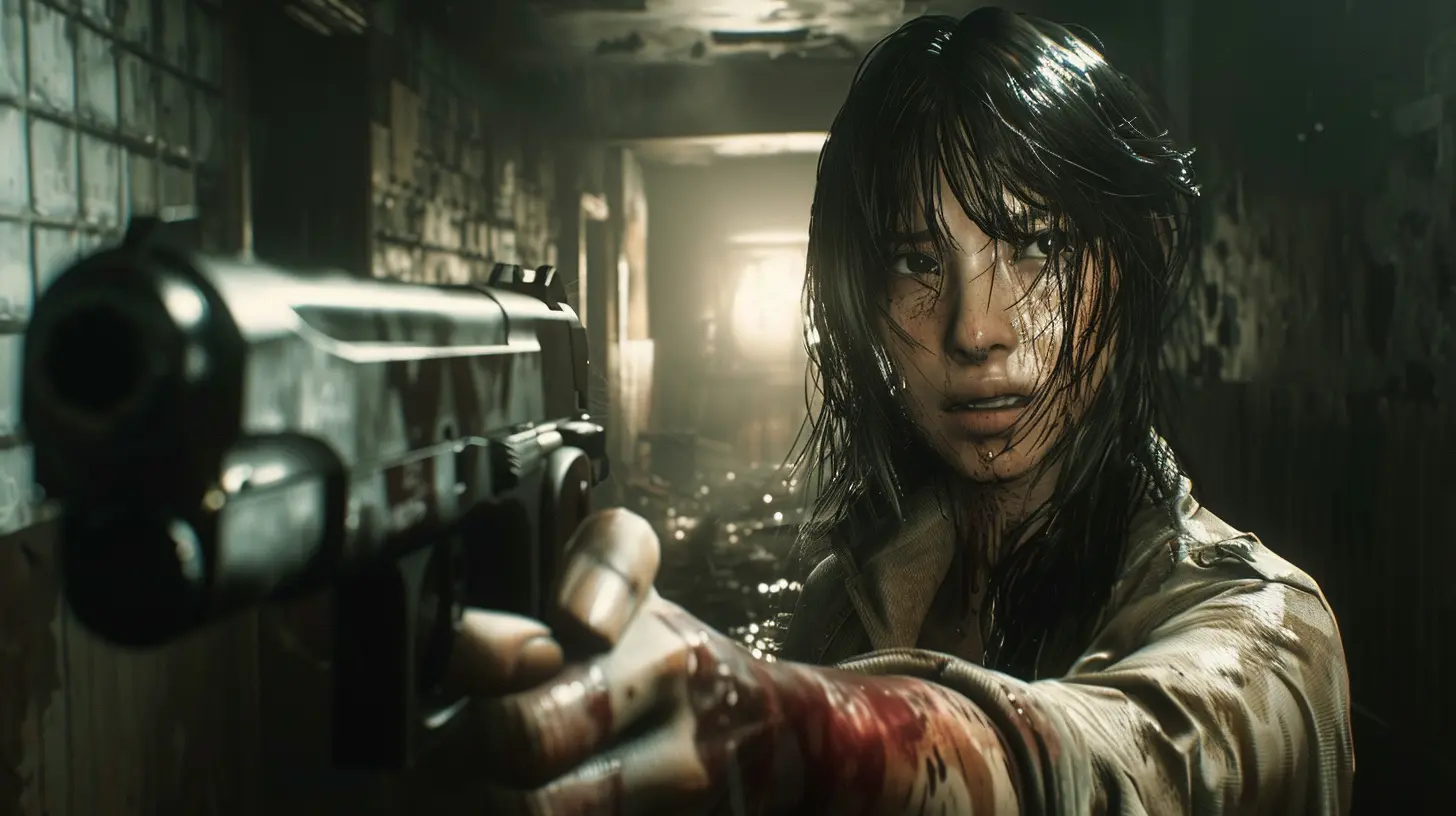
Lighting: The Ultimate Fear Factor
Let’s talk about lighting for a second. You ever notice how horror games are always dark? Like, seriously, do none of these characters pay their electricity bills? But here’s the thing: darkness isn’t just a cheap way to save on rendering textures—it’s a strategic weapon.Shadows, dim lighting, and flickering bulbs all mess with your brain. Why? Because humans are inherently afraid of the unknown. When you can’t see what’s lurking around the corner or hiding in the corner of the screen, your imagination goes into overdrive. That’s when the fear kicks in.
Take Amnesia: The Dark Descent—a game that practically wrote the book on using lighting to terrify players. The pitch-black environments aren’t just there to annoy you. They amplify the tension, forcing you to rely on a tiny lantern that’s constantly running out of oil (because why not make things even more stressful?). Every shadow becomes a potential threat, and every step you take feels like a gamble.
Oh, and let’s not forget about volumetric lighting—those ethereal rays of light creeping through the cracks in a door or the mist in a forest. It’s beautiful, sure, but in horror games, it’s also a trap. That soft glow often leads players toward danger, luring them in before springing a scare. Pure evil, right? 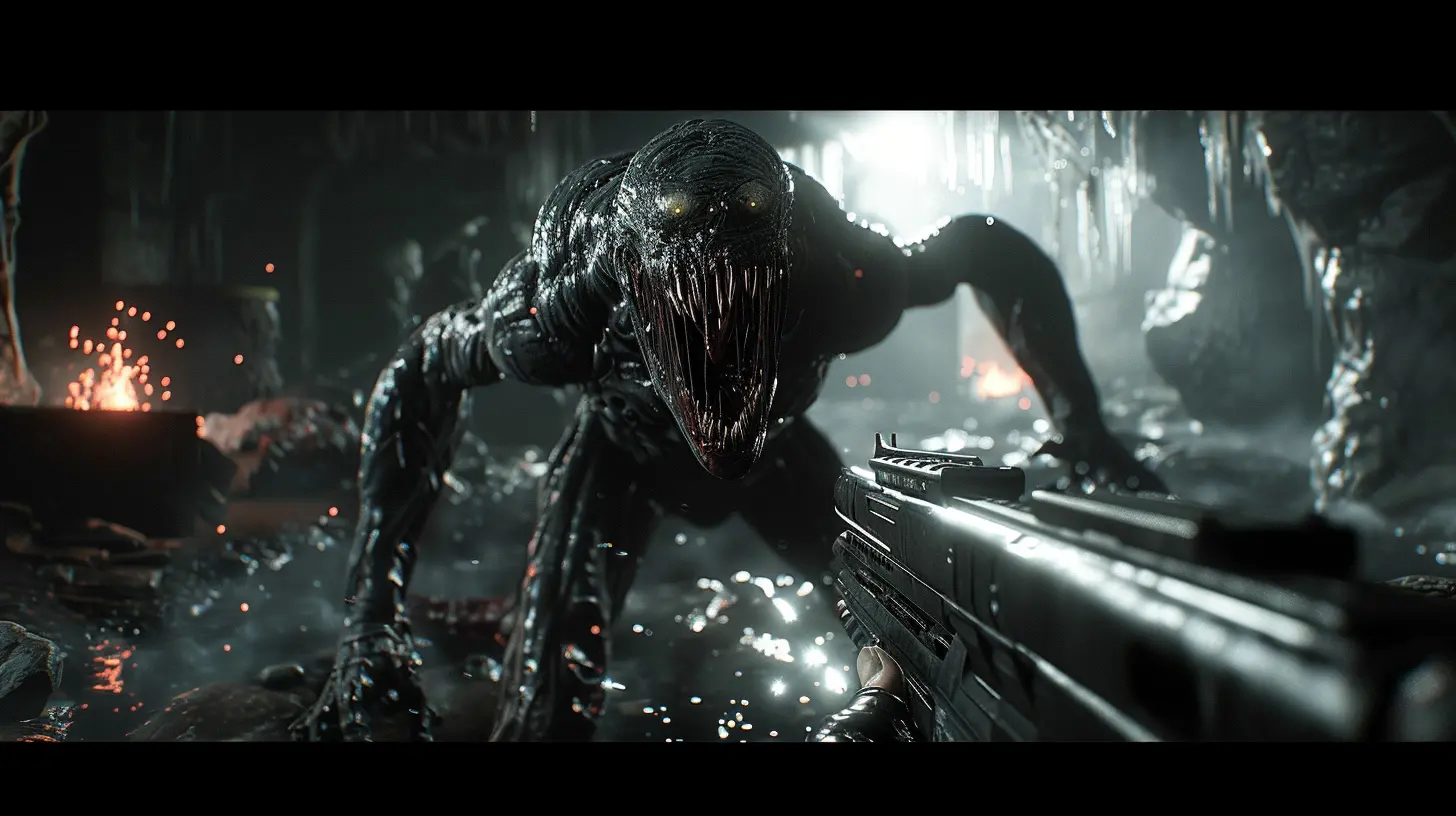
Textures: When the Gross Factor Hits Home
Look, nobody wants to see perfectly clean textures in a horror game. That’s just boring. What we want—scratch that—what we need are gritty, grimy, disgusting textures that make us feel like we need a tetanus shot just for looking at them.Imagine walking through a rotting hallway, the walls oozing with mold, rust, and who-knows-what-else. You can almost smell the decay through the screen, and that’s no accident. Designers use hyper-detailed textures to make environments feel unsettlingly real—so real that your brain screams, “GET OUT OF THERE!”
A great example? The Last of Us Part II. While not strictly a horror game, its use of decayed, abandoned environments makes players feel this constant sense of dread. The textures of bloodstains, flesh, and dirt feel so lifelike it’s disturbing. It’s like you can feel the filth clinging to you, and that’s EXACTLY how horror visuals get under your skin. 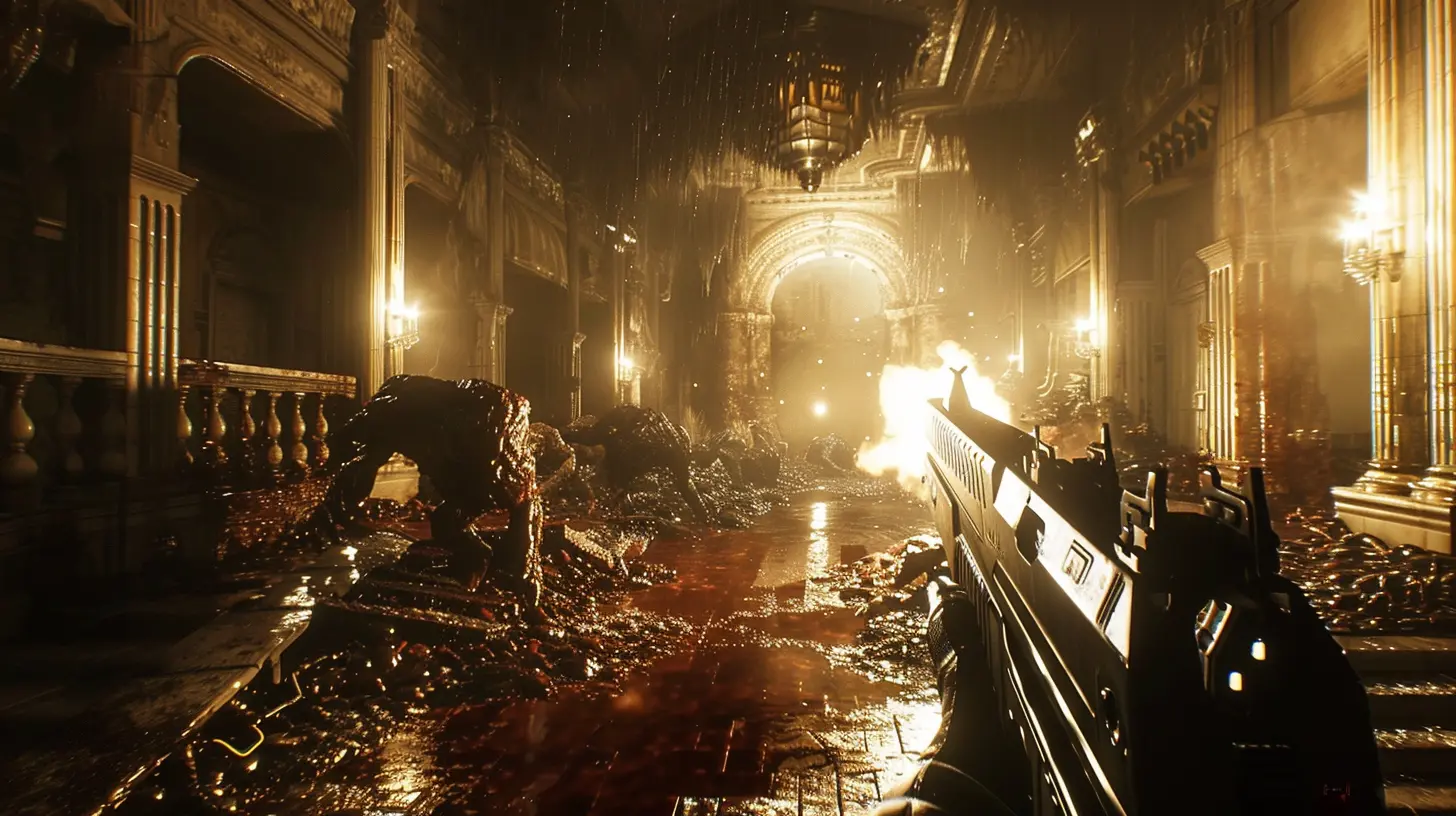
Animation: The Uncanny Valley Strikes Again
Let’s talk about the uncanny valley. If you’re not familiar with the term, it’s that weird, uncomfortable feeling you get when something looks almost human but not quite. Horror games LOVE this effect because our brains are just wired to freak out when we see something that shouldn’t exist but feels too real to ignore.Take monsters, for example. The jerky, unnatural movements of creatures in games like Dead Space and Silent Hill are deliberately designed to make us squirm. When your brain can’t make sense of how something moves, it panics. Those awkward, twitchy animations? Straight nightmare fuel.
And it’s not just monsters. Even human characters in horror games can use unsettling animations to ramp up the tension. Ever notice how the characters in Until Dawn have this weird way of staring at you for a little too long during conversations? Yeah, that’s not an accident—that’s psychological warfare.
Audio and Visual Fusion: A Match Made in Hell
Alright, I know this article is about graphics, but I’d be doing you a disservice if I didn’t mention how visuals and audio work together to scare the pants off you. Seriously, these two are like Bonnie and Clyde—a terrifying duo you can’t escape.Think about it: When you see a faint silhouette in the distance, what makes it scary isn’t just the sight. It’s the eerie creak of a door, the sudden swell of an ominous soundtrack, or the deafening silence before a scream. When perfectly paired, visuals and audio turn a simple hallway into a nightmare arena.
A masterclass in this? Outlast. The game’s night vision camera mechanic, combined with spine-chilling sound effects, creates a level of immersion that’s downright cruel. Seeing grainy, green-tinted monsters lurking in the dark THROUGH a tiny screen? Yeah, let me just nope out of that situation.
Special Effects: Blood, Guts, and Gore Galore
What’s a horror game without a little (or a lot of) gore? While not every horror game relies on blood and guts to scare players, there’s no denying that special effects play a HUGE role in the genre.Games like Dead Space go all-in with their gore effects, from severing limbs to grotesque monster designs that look like something straight out of your worst nightmares. Every splatter of blood, every chunk of flesh—it’s all painstakingly crafted to make you squirm.
But gore isn’t just there to gross you out (well, not entirely). It’s often used to convey the stakes of the game. The more brutal the visuals, the more you feel the danger. It’s a visceral reminder that this world is not one where you want to stick around too long.
The Rise of Realism in Modern Graphics
Let’s take a moment to appreciate how far horror game visuals have come over the years. Back in the day, we were spooked by blocky, pixelated monsters (looking at you, OG Resident Evil). But now? Now we’ve got photo-realistic graphics that are so detailed you’ll start checking over your shoulder IRL.Games like The Medium and Resident Evil Village have raised the bar for realistic horror visuals. From perfectly rendered reflections in mirrors to the subtle flicker of firelight, these games use cutting-edge technology to immerse you in their terrifying worlds. It’s scary how good they are—literally.
But realism isn’t just about looking pretty. It’s about making the player feel like they’re part of the story. When you’re wandering through a hyper-realistic forest, every crunch of leaves underfoot or sway of the trees feels authentic. That authenticity makes the scares hit harder because your brain refuses to believe it’s just a game.
Conclusion: Fear Is All in the Details
At the end of the day, the true terror of horror games lies in the smallest details. From the flick of a shadow to the eeriness of peeling paint, visual effects are what turn a simple story into a heart-pounding experience. Designers don’t just create graphics—they craft nightmares, using every trick in the book to keep you on the edge of your seat.So next time you’re playing a horror game, take a moment (you know, between screaming and hiding under the blanket) to appreciate the artistry behind the fear. Because behind every monster, dark hallway, and flickering light is a team of evil geniuses who KNOW how to mess with your head. And let’s be honest—we wouldn’t have it any other way.
all images in this post were generated using AI tools
Category:
Video Game GraphicsAuthor:

Brianna Reyes
Discussion
rate this article
5 comments
Lillian McGovern
Great read! It's fascinating how visual effects breathe life into horror games, amplifying our fears and keeping us on the edge. Here's to more spine-tingling adventures—may your controllers survive the scares! 🎮👻
May 17, 2025 at 5:11 AM

Brianna Reyes
Thank you! I’m thrilled you enjoyed the article. Visual effects truly elevate the horror experience, and I appreciate your support! 🎮👻
Galina Mitchell
Great read! It's fascinating how visual effects can elevate the horror experience, creating a deeper emotional connection. Understanding this interplay can inspire developers to push boundaries in immersive storytelling. Keep it up!
May 4, 2025 at 3:58 PM

Brianna Reyes
Thank you! I'm glad you found the article insightful. Visual effects truly play a vital role in enhancing the horror experience!
Graham Taylor
In shadows deep, where whispers swell, Graphics weave a haunting spell. Flickering lights and ghostly sights, Crafting dread on moonless nights. Each pixel dark, each frame a scream, In fear's embrace, we lose our dream. Art and terror, a chilling team.
May 3, 2025 at 4:33 AM

Brianna Reyes
Thank you for beautifully capturing the essence of how visuals elevate fear in horror games. Your poetic reflection perfectly illustrates the powerful bond between graphics and the emotional experience of dread.
Ardyn Lawson
Do visuals really scare?
May 1, 2025 at 4:40 PM

Brianna Reyes
Yes, visuals can significantly enhance fear in horror games by creating immersive and unsettling atmospheres that evoke strong emotional responses.
Sloane Diaz
Visual effects in horror games do more than just dazzle the eye; they warp reality, bending perceptions and igniting primal fears. Could it be that the shadows cast on the screen are reflections of our own psyche? Dive deep, if you dare—what lurks beyond? 🖤
April 30, 2025 at 2:45 PM

Brianna Reyes
Absolutely! Visual effects in horror games not only enhance the immersive experience but also tap into our deepest fears, making the shadows on-screen a mirror to our psyche. This interplay heightens tension, drawing players into the unsettling unknown. 🖤

